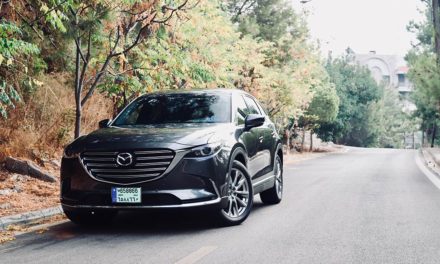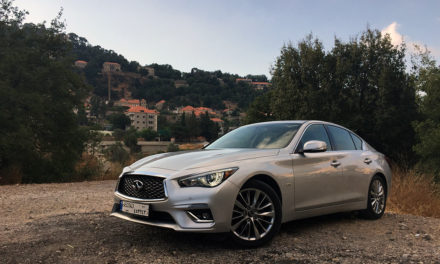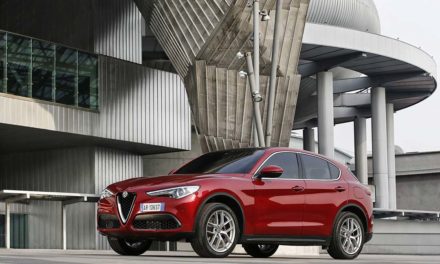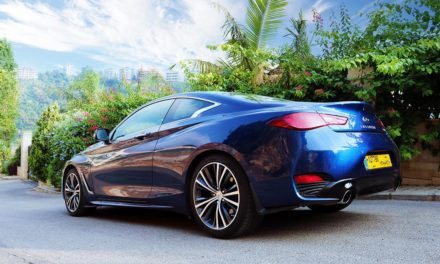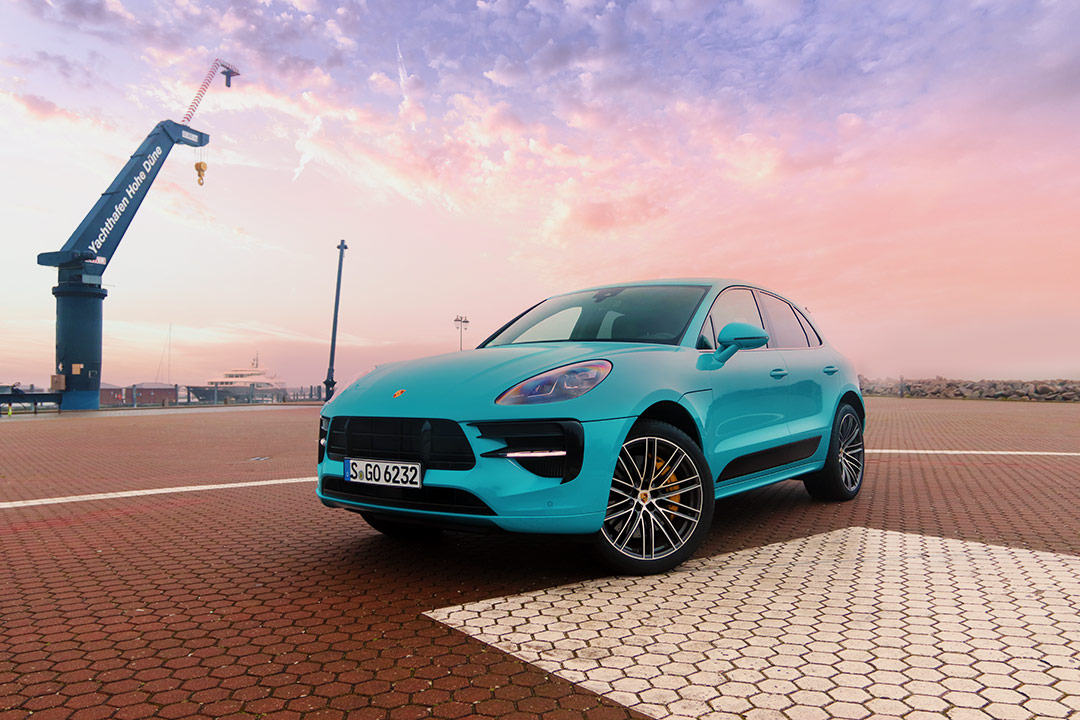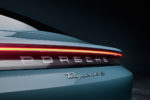Technology And Genius Collide
BEIRUT: What sets one car apart from another? It’s a simple enough question, but unfortunately the answer isn’t as clear-cut as it used to be.
For instance, it’s obviously not the horsepower, because we live in an age where performance figures no longer define cars – we’ve seen souped-up Toyota trucks that can demolish a Porsche 918 in straight-line acceleration, and yet they’re not treated with reverence. Besides with the whole world gone turbo-happy, pretty much any engine can get a boost in power with the addition of a twin-scroll.
Could it be the equipment then? Nope, because with half the world’s brands sharing various components with the other half, and most of them outsourcing key components to the same OEM suppliers, it’s becoming really hard to lavish exclusive praise on any one car for pretty much any new part or gadget. Transmissions, suspensions, braking systems, lighting, electronics, rims, air bags and seat belts, to name a few, aren’t really made by the car manufacturer, and instead come from a number of contractors that specialize in each of those categories.
In fact, in an effort to reduce costs, multiple brands all share the same underpinnings to produce their own take on the same car – the Porsche Cayenne, Audi Q7, Volkswagen Touareg and Bentley Bentayga come to mind. And have you ever seen the platforms of the Mercedes-Benz GLA or the Infiniti Q30? I have – they’re exactly the same except for the styling. Or how about the Rolls Royce Ghost II, which is basically a BMW 7-Series in fancy attire? I think you’re starting to get the picture.
So, then, is it reliability that sets them apart? Again, no. As I mentioned before, most car manufacturers outsource pretty much everything to the same suppliers, and if the unit can fail in one car, it can fail in any car, so reliability isn’t confined to any one marque. Takata is a notable example.
Fact is, brands focus primarily on two things: the engine and the chassis. But even regarding the engine, I’m skeptical because they’re so often shared. And besides, dropping a RUF-tuned boxer engine in a Lykan hardly makes the Hypersport the equivalent of a Yellowbird, and driving a Maserati Gran Turismo equipped with a Ferrari-derived engine is a far cry from actually being behind the wheel of a prancing Maranello graduate.
That mostly leaves the styling, the aforementioned chassis – assuming it’s not shared across brands – and the handling, and I don’t know about you, but I seems to me that in recent years the more sophisticated cars get, the less connected you feel to them, and tragically it seems to have become the norm today even among cars that we consider extreme.
Which brings us to the 570S, from McLaren’s entry-level Sports Series, (yeah, entry level, I found that funny too) sitting beneath the Super Series and the Ultimate Series, which includes the likes of the P1 and the Senna.
The “affordable“ 570S is a perfect example of a car that stands apart from the masses, and not because of the styling of the cupholders, which are great by the way.
In fact, it stands apart for two reasons, the first of which is the way it looks. Go ahead, take a good look, no one will hold it against you because this thing can turn heads in the middle of a frenzied dash to escape an incoming tsunami.
Look closer, and you’ll start noticing the prevalence of calculated elegance behind the madness of the design. That’s right, it’s not just random curves and swoops, or the completely pointless and unemotional angles of the Lykan Hypersport. Instead, the skin of the 570S gently wraps around the furthest extremities of the car’s key sections (cabin, wheel wells, engine bay, cooling system, suspension, etc. It’s all fluid, organic, flowing softly from one apex to the next, streamlined very much like the iconic Porsche 911.
OK, pick your jaw up off the ground, because it’s going to drop again when you open the door.
This does not swing up vertically like Lamborghini’s scissor doors, nor does it swing back like the Hypersport or the Wraith (disaster waiting to happen). It’s not even a gullwing! No, what you get are butterfly doors that flip open with the A pillar as the axis. Yes, I know you’re already in love with the car – so am I – but pick your jaw up again so we can continue with the organized madness.
The real insanity, the one that most people do not notice, is the fact that the styling is deliberate, designed to direct airflow in calculated directions. Take the nose, the curved front end of the car that seems to be caught in a perpetual smile. That design directs air in multiple directions – to the sides, to feed the air inlets that cool the brakes, below the car, and above, allowing the baby McLaren to surgically slice through the air like a scalpel.
The high placement of the mirrors, meanwhile, is not arbitrary, but intended to feed air directly into the channel along the top of the car door, which houses a conduit for said air that flows into the engine bay. Seriously, air flow through the inside of the door! How mad is that? Or genius? And if you happen to be in the company of an example garnished with all the carbon fiber bits, well that’ll just make your day more delightful.
What’s the point of all this, you ask? Aerodynamics, baby! Reducing air resistance to a marginal coefficient. If you want specifics, you can use a little-known magic tool called Google because I can’t be bothered with numbers. I just want something that makes me grin like a kid both when I look at it and when I drive it.
You see, the common misconception about car journalists is that we’re all about facts, figures, statistics and estimates. But that couldn’t be further from the truth because were that the case we’d all be accountants. The simple truth is we do what we do because, when it comes to cars, we’re still kids at heart who derive satisfaction from being behind the wheel and in control of pretty things that scare us half to death. You know, like everyone else on the planet. The difference is that we somehow manage to put those sentiments into coherent words.
And when I say in control, I mean really in control, which brings us to the other thing that makes the 570S a truly unforgettable supercar.
When you drive the 570S, you feel a sense of satisfaction, like you actually played a role in whatever the car was up to. It’s a marvelous sensation that harkens back to what motoring was all about in the first place.
Let’s start with the feel of the chassis. The aluminum and carbon-fiber construction that helps keep the dry weight down to 1,316 kilograms is extremely rigid. Flex? Not happening. Instead you feel the solidity of a steel vault, minus all the steel and the weight. It feels beyond most anything I’ve driven, and I’ve driven a lot of cars.
Is it fast? Oh yeah, it is. Very. The century mark comes around in 3.2 seconds (blink and you’ll miss it), and top speed is an astounding 328 kilometers per hour, all thanks to the twin-turbo-charged 3.8-liter Nissan-derived V-8 generating 570 ponies and delivering 600 Newton-meters of torque to the rear wheels via a seven-speed dual-clutch transmission that seems to read your thoughts. You’ll notice, by the way, that the extraordinary 3.8-liter mill seems to be a common theme across the McLaren range.
As for the brakes, they have massive stopping power, and can bring this relatively light supercar to a standstill in no time flat, but the thing is, though speed is great, it’s not everything. And full disclosure, I never tried to match the claimed top speed of the 570S or the acceleration. Honestly, what does it matter? Once 0-100 kph accelerations drop under 4 seconds and the blood starts rushing out of your skull, a fraction of a second will hardly make you giddier with delight, assuming you’re still lucid.
In fact, I hardly pushed the 570S because not only was there a bit of congestion on the road to Beiteddine, but it was really difficult to take any liberties with the car while my friend Johnny, the marketing manager for McLaren Beirut, was sitting in the passenger seat and watching like a hawk. Can’t blame the guy. Besides, the 570S is so pretty that the last thing I wanted to do was take risks in the midst of the lunacy that is Beirut traffic.
Still, although I was being conservative in my driving, I did let loose enough to come to one irrefutable conclusion: This McLaren can lay claim to having one of the most extraordinary chassis in any car I have ever driven, but where it truly shines is in driver engagement. You feel a connection between you and the 570S, a sort of symbiotic relationship that lets you always know what the tires at all four corners are up to.
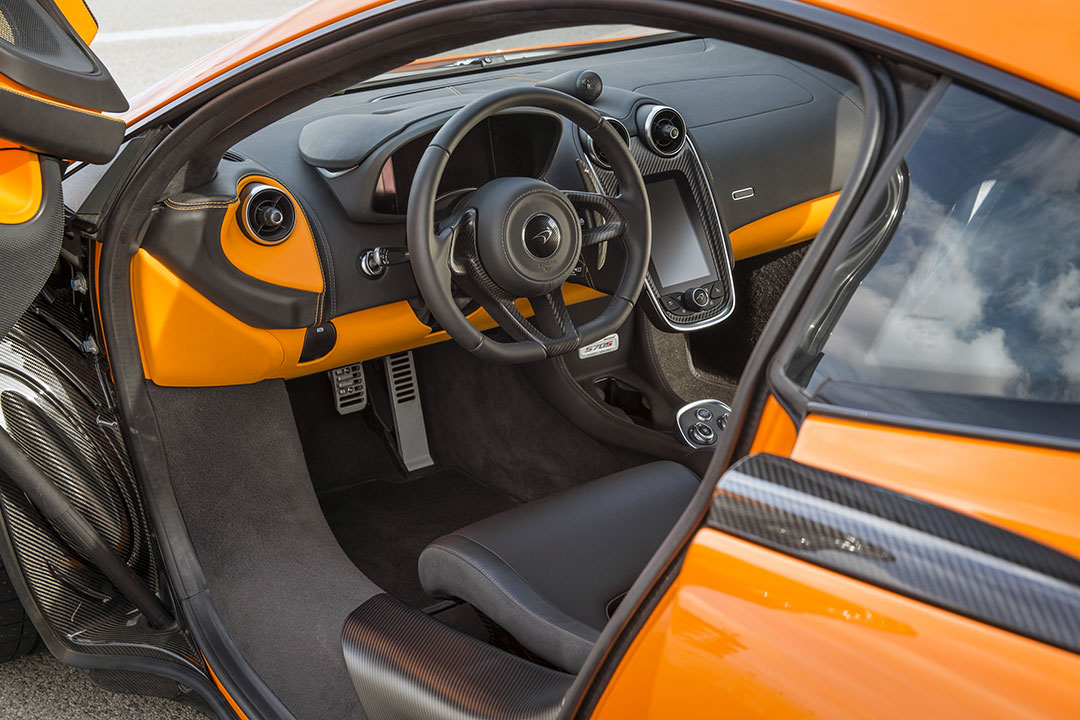
The electrohydraulic steering is remarkably communicative, a trait that seems to be a rarity in modern vehicles, and the quick steering ratio responds with impeccable precision, so subtle movements have big effects.
Road-holding, meanwhile, is as tenacious as Donald Trump’s Russia-probe woes, thanks to the three-moded active dampers and Pirelli P-Zero Corsas wrapped around staggered 19- and 20-inch rims.
Better yet, gear changes in the seven-speed box are virtually undetectable – sure, you can hear the shifts as the engine note changes, but you can’t feel them, and those shifts grow more determined when you switch the power mode to sport or track.
All that hardware is backed up by the constant presence of power, provided you keep the needle above 3,000 rpm. And if you want to floor it at under 3,000, just downshift and you’ll avoid any turbo lag – this baby redlines at 8,200 so you’ve got plenty of revs to play with.
Switch the power mode selector to track and the transmission responds to inertia to push gear changes – if you drop to 60 percent of throttle when you’re over 5,000 rpm it’ll engage the next higher gear before the revs drop. It really comes in handy great when you come across a knucklehead in an Evo with delusions of grandeur.
You might also want to consider springing for the optional bucket sport seats. They may not be as liberating as the standard ones, but then the whole point is to keep you firmly installed in the car while you’re taming corners on canyon roads.
Nonetheless, they’re supportive and comfortable, considering it’s a supercar you’re driving, which is something you might not want to do every day. Of course, you can if you want to – the 570S is more than up to the task and a surprisingly pleasant commuter – but you can also use the car to pick up Uber passengers, or wear a tuxedo to go grocery shopping. Some things, even if doable, are simply not necessary, unless you just want an excuse to drive the car. Otherwise, I’d save it for when conditions are optimal.
I mean just look at it: It’s drop-dead gorgeous. It stirs the emotions, and trust me your emotions would be stirred in the wrong direction if some distracted asshat in a dilapidated Volvo from the ‘70s scratched that sublime Ventura Orange paintwork, or worse.
This is a fast, beautiful car that’s impossible to ignore, with psychic abilities that pick up on your intentions and render the driving experience into motoring bliss. It’s a rarity nowadays, a car with a distinct character that blazes its own path. That’ not bad for a marque that’s a relative infant in the commercial market. And to boot it has an impressive racing pedigree, not to mention a superstar for a granddaddy. That’s the F1 in case you were wondering.

